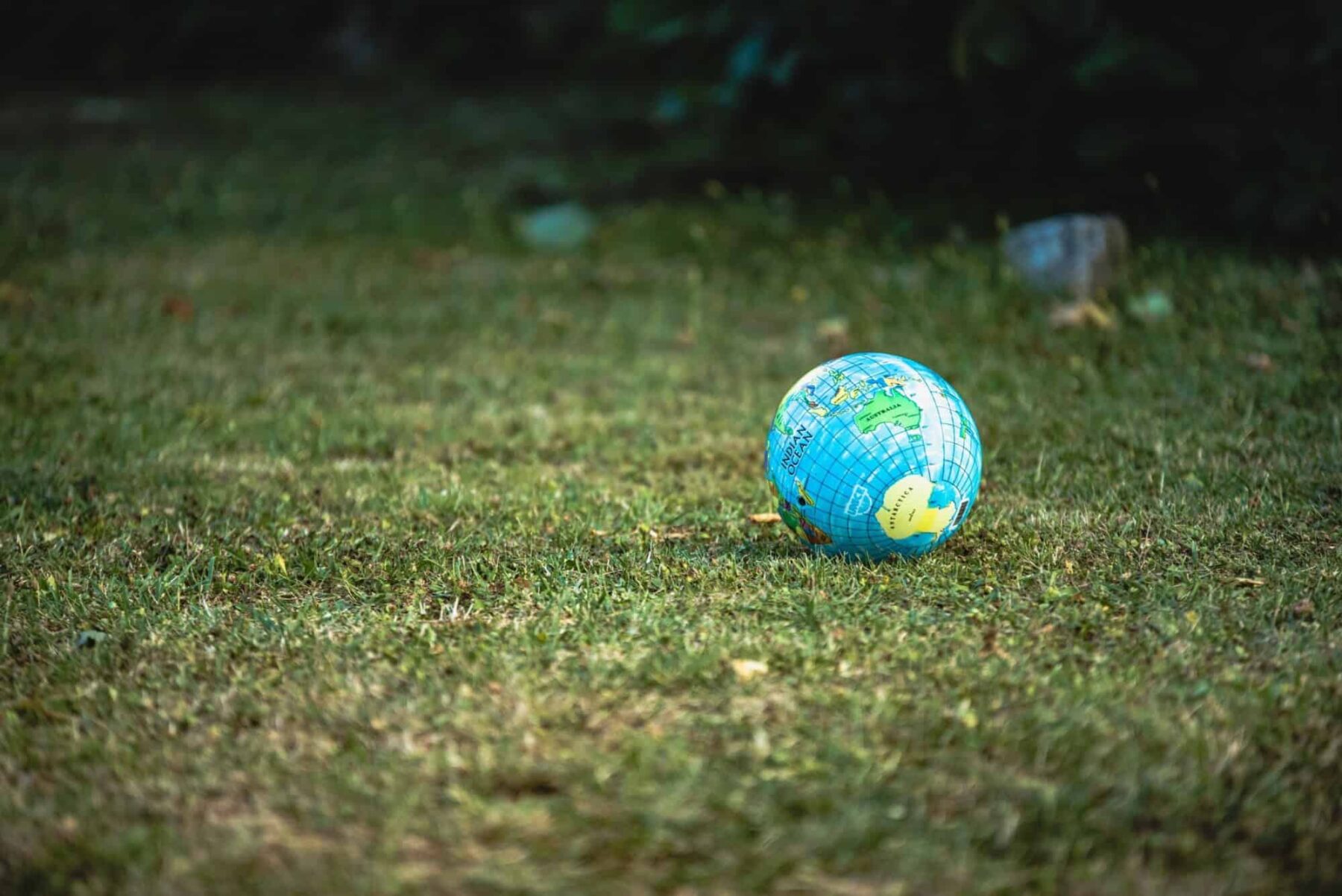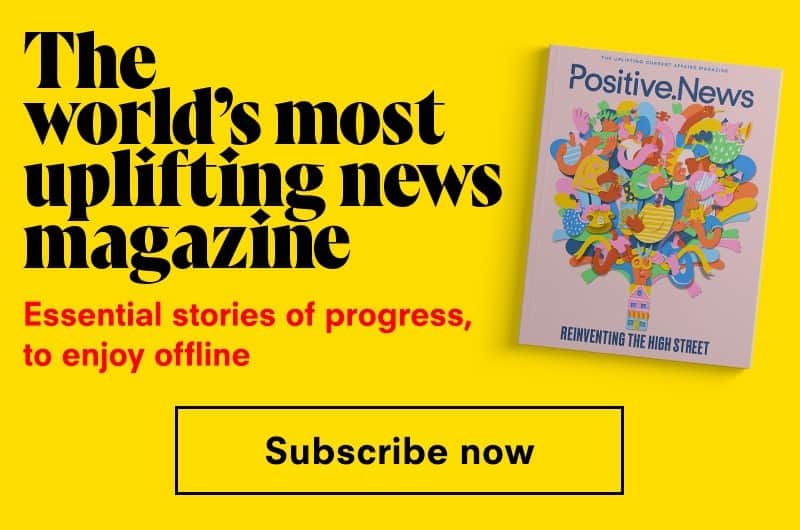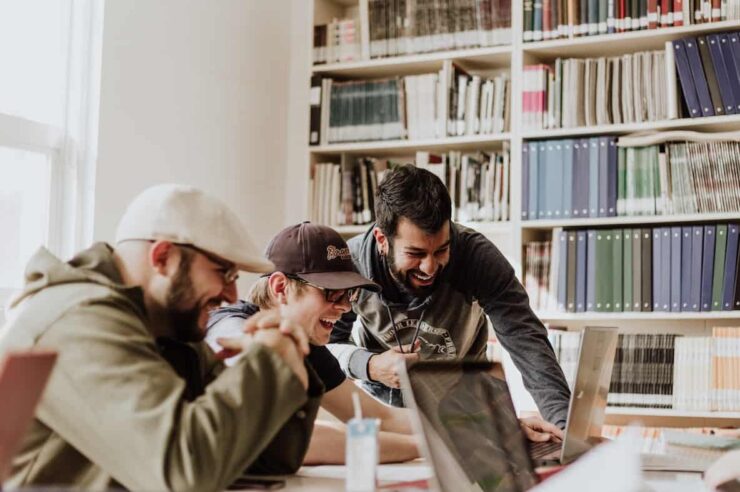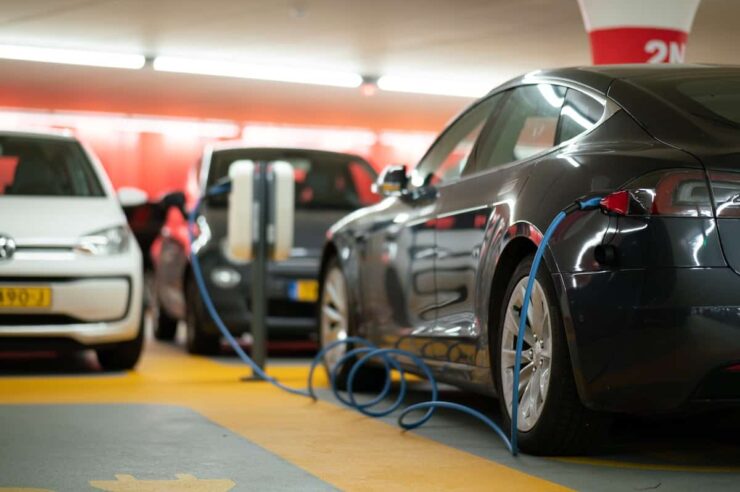What is the circular economy, why should we embrace it, and is it finally going mainstream? Experts weigh in
Positive News has been reporting on the circular economy for over a decade, but hitherto it’s remained a niche concept. Has it finally reached a positive tipping point? Is circularity becoming a business priority?
To find out, we brought together two seasoned observers: Ella Hedley, the emerging innovators manager at the Ellen MacArthur Foundation, and Martin Wright, chair of Positive News and a judge for the Green Alley Award, Europe’s first startup prize for the circular economy. Here’s what they had to say.
Positive News: What is the circular economy?
Ella Hedley: The easiest way to talk about the circular economy is to talk about our existing economic model, which is a linear economy. This system takes resources out of the ground, uses them to make products and materials, and then those products are either landfilled or incinerated. A circular economy moves away from that model toward a regenerative one. It aims to eliminate waste and pollution, circulate products and materials, and regenerate nature.
Martin Wright: It’s becoming more apparent that doing things the old, linear way is a problem. Whether that’s CO2 emissions being released into the air, throwing away fossil fuel byproducts, or throwing plastic down the drain. There’s a recognition now that we need to move away from the take-make-waste model. Nature is completely circular – it recycles everything – it doesn’t throw stuff away because in nature there is no “away”.
PN: How does the circular economy work in the real world?
EH: Hundreds of businesses within our network are actively implementing circular economy strategies, and we are about to launch a public database of examples of startups doing just that. One of my favourites is Winnow, an AI-enabled weighing scale and bin, which tracks food waste in commercial kitchens. It helps chefs reduce food waste in real-time, cutting the amount of food thrown away by up to half. It’s been rolled out across the entire global portfolio of Ikea restaurants. It’s exciting to see larger organisations adopt more circular practices and collaborate with startups to bring in disruptive thinking.
PN: Surely we need to see more adaptation from bigger brands?
MW: There’s a real opportunity for major brands to make these ideas mainstream and more politically acceptable. Take Marks & Spencer, which has partnered with Dotte, an online peer-to-peer marketplace for children’s clothing. It encourages customers to return clothes when the child has grown out of them, rather than sending them to landfill. It might sound wacky, but if M&S is doing it, then it becomes normal.
EH: Circular fashion businesses could soon account for 23 per cent of the global market through resale, rental, repair, and remaking models. We’ve seen secondhand resale clothing stores like Vinted and Thredup reach billion-dollar valuations but we need to see more collaboration and more scaling up of new business models from bigger brands.
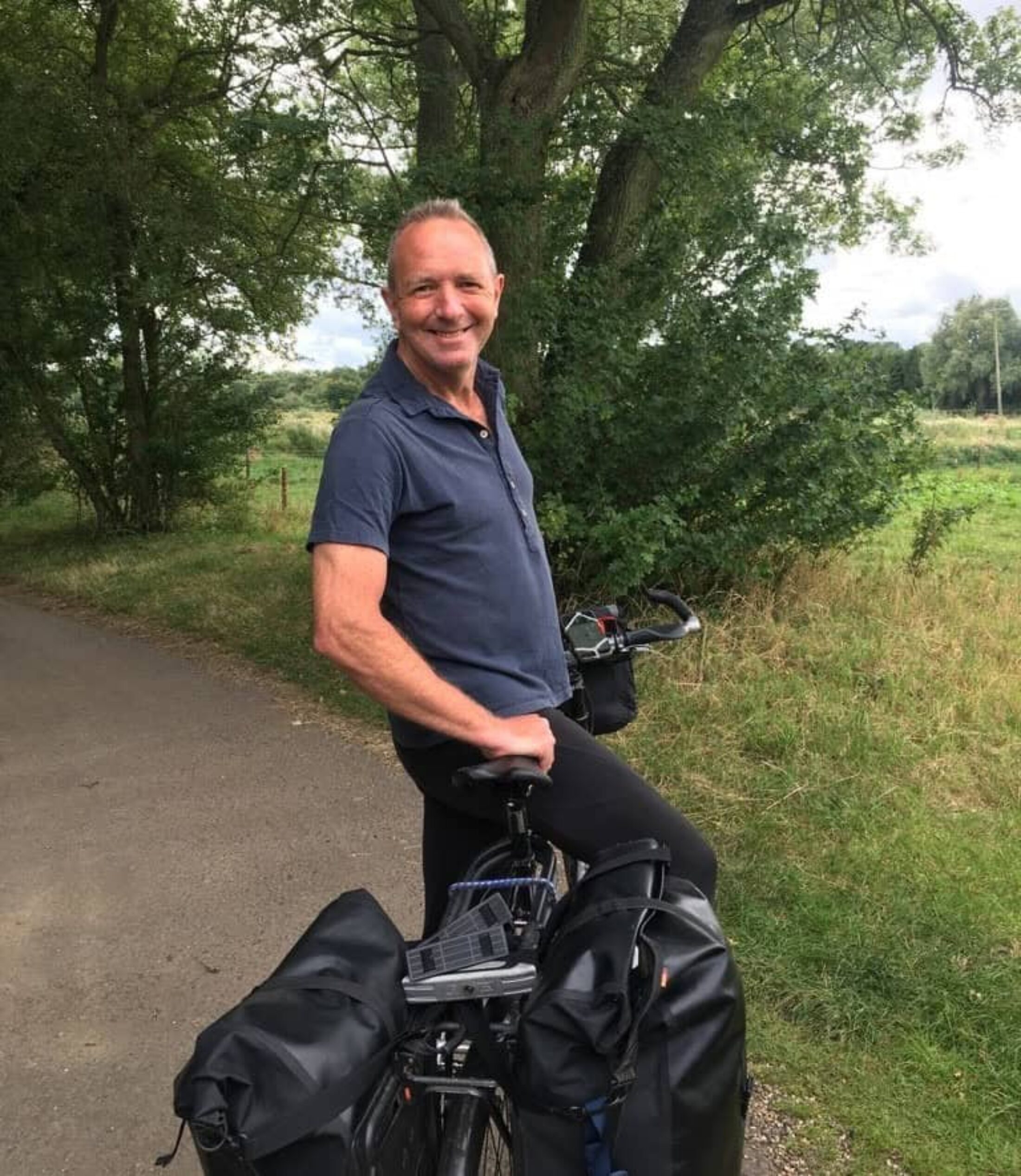
‘There’s a real opportunity for major brands to make these ideas mainstream,’ says Martin Wright
PN: Is any of this driven by consumer demand?
MW: Partly, but not sufficiently. There’s a fantastic little store about a 10-minute walk from my flat called Jarr Market where you take along your own jars and fill them up with detergent or muesli or whatever. There’s no packaging involved. Some supermarkets are starting to experiment with that idea but it’s not going to happen fast enough to meet the scale of the challenge in terms of net zero and reducing other wastage problems. Governments should step in and set up a policy framework that speeds up such solutions.
PN: What sort of policy changes are needed?
MW: As soon as you start putting a price on carbon, all sorts of things become immediately economic. However, we’re not going to get a carbon tax at a meaningful level in the next few years. So, we should tax what we don’t want, not what we do – tax pollution, not people’s income.
EH: There’s no silver bullet. [The Ellen MacArthur Foundation has] universal circular economy policy goals, which set out a framework for governments, cities, and businesses around the things that need to be taken into consideration, but the same policy won’t work in Africa, for example, as it will for the UK.
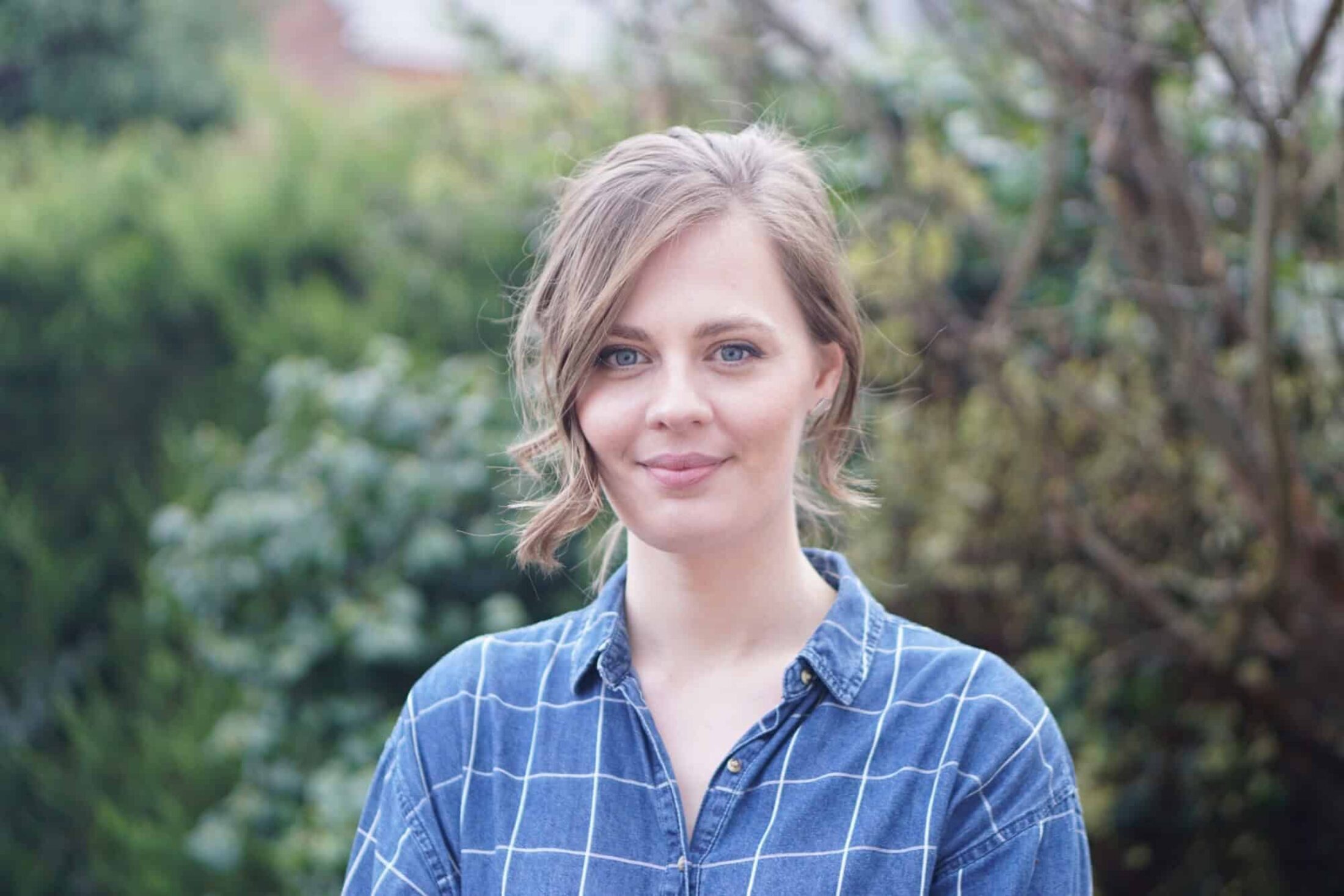
The circular economy has the potential to create jobs and deliver economic growth, says Ella Hedley.
PN: How can waste be reused in a more positive way?
EH: As Martin said, there is no “away”. We’ve been throwing away materials that are really valuable and that actually provide input into our economy that we shouldn’t be losing that inherent value from.
There are now companies like Kaffe Bueno, which take used coffee grounds and use them to make flour for food or cosmetic products with the likes of L’Oreal. Or Back Market, which just became France’s most valuable startup, valued at €5.7bn (£4.9bn). Its entire business model is based on refurbishing e-waste. It doesn’t solve the whole problem, but it demonstrates that consumers will interact with a refurbishment model.
MW: Another interesting trend is business clusters, such as Kalundborg in Denmark, where companies establish themselves in industrial clusters so they can reuse each other’s waste materials. One is taking shape in Teesside and is based around hydrogen and chemicals companies. I think we will start to see more of that, and a more enabling policy environment would speed up uptake.
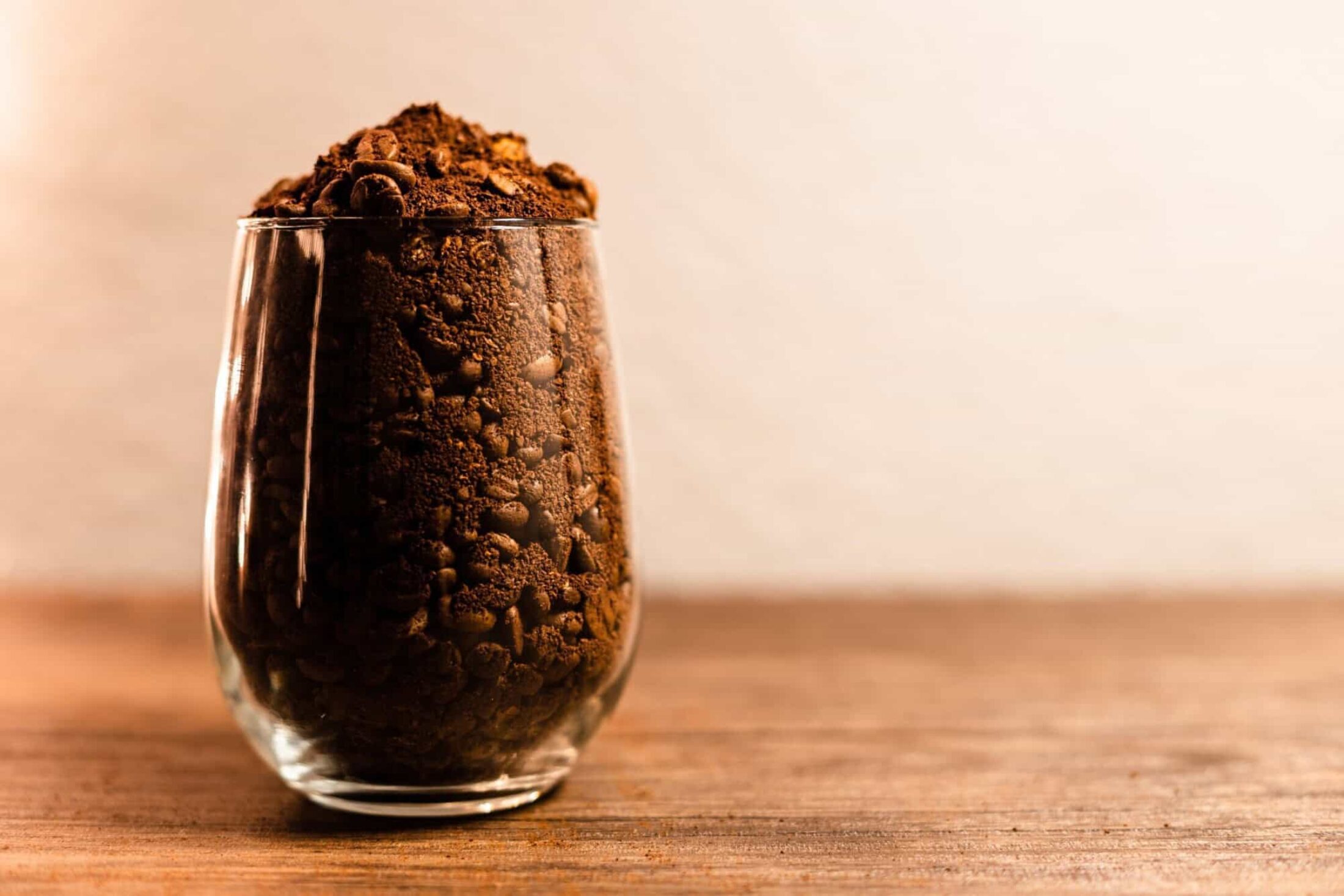
Kaffe Bueno turns coffee grounds into flour for food or cosmetic products. Image: Jose Hernandez-Uribe
PN: What is the circular economy good for, aside from the planet?
MW: When companies realise they can make more money by extending the lifecycle of their products through repurposing or redesigning, I think that can be a way to shift from selling stock to effectively providing a service. It’s about finding ways to ringfence the value of your products rather than let them go to waste.
EH: There is a huge economic opportunity here. The circular economy is an economic model. We know that it’s not going to work if the economics don’t work and we’re now seeing that it can create new jobs and deliver massive economic growth, including an estimated €1.8tn (£1.53tn) per year in Europe alone.
PN: Do we need a mindset shift from the general population too?
MW: There are examples where people have shifted from something that was purely circular to something that was hideously linear in no time at all due to the perverse incentives of something being available really cheap. For example, roadside stalls in India used to sell chai in little clay [biodegradable] cups, which drinkers threw on the ground when they were done. It was fine because it was a complete circular economy – potters constantly made new clay cups. At some point, the clay cups were replaced with flimsy plastic cups, but at least there is the opportunity to shift it back.

Chai tea was served in biodegradable clay cups in India, which is an example of circularity. Image: Aditya Chinchure
PN: So, has the circular economy reached a tipping point?
MW: Not yet. There are lots of points of light and the key thing is to try and join them together. Look at things like the Green Alley Award – there are examples of people doing great things.
EH: I was going to say exactly the same. I don’t think it has yet. We’re seeing really hopeful signs of where we’re heading but until we’ve really transformed the global economy, we’re not there.
PN: Where will the circular economy be in the next decade?
MW: Becoming significantly more mainstream or we’re f***ed. Nature gives us a lot of stuff for free and if we pay attention, we can keep getting it for free.
Main image: Guillaume de Germain
Help us continue to break the bad news bias
Positive News is helping more people than ever to get a balanced view of the world – one that supports their wellbeing and empowers them to make a difference towards a better future. And as our audience and impact grows, we’re showing the rest of the media that good news matters.
But the UK’s cost of living crisis is affecting our income, with fewer people able to commit to a magazine subscription – which has traditionally been our main source of funding. Plus, paper and printing costs keep rising.
We don’t want to put a paywall on our website, because we believe everyone should have the chance to benefit from good news. But we won’t be able to continue funding our online reporting without your help.
If you value what we do and can afford to, please consider making a one-off or regular contribution as a Positive News supporter. We need 1,000 readers to contribute just £3 per month to get us through this challenging time.
And remember, as a not-for-profit, we work only in service to you, and all funds go towards our journalism.
